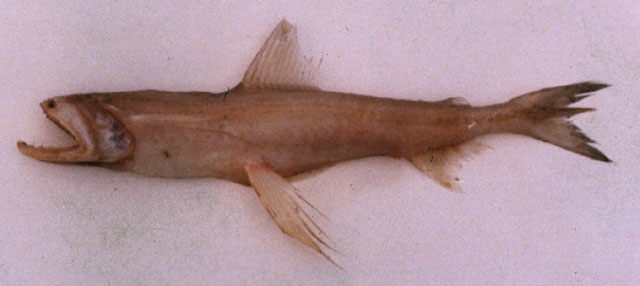| Synodontidae (Lizardfishes), subfamily: Harpadontinae |
| 60.97 cm TL (male/unsexed) |
|
benthopelagic; brackish; marine; depth range - 50 m, oceanodromous |
| Indo-West Pacific: Somalia to Papua New Guinea, north to Japan and south to Indonesia. |
|
Dorsal spines (total): 0-0; Dorsal soft rays (total): 11-13; Anal spines: 0-0; Anal soft rays: 13-15. Scales restricted to posterior half of the body. Posterior tip of pectoral fin reaching origin of pelvic fin. |
| Inhabit deep water offshore on sandy mud bottom for most of the year, but also gathers in large shoals in deltas of rivers to feed during monsoons (Ref. 9987, 11230). Spawn 6 batches of broods per year (Ref. 43449). An aggressive predator (Ref. 9987). Primarily caught along Maharashtra with the bag-net, better known as 'dol' net. Operation of this gear is timed to a strong tidal current. The bag with the mouth set against the current strains the fish which is being retained therein by the strength of the current. The net is thus retrieved before the tide turns. Very phosphorescent. Excellent food fish. Marketed fresh and dried or salted; consumed pan-fried (Ref. 9987). |
|
Near Threatened (NT); Date assessed: 28 June 2018 (A2d) Ref. (130435)
|
| harmless |
Source and more info: www.fishbase.org. For personal, classroom, and other internal use only. Not for publication.

